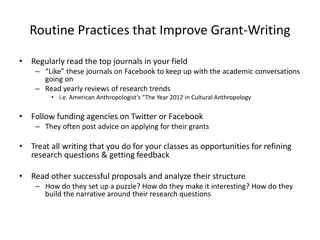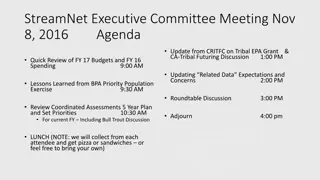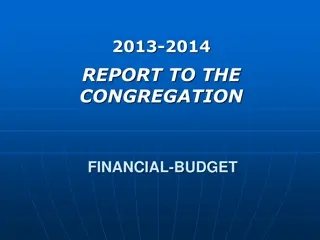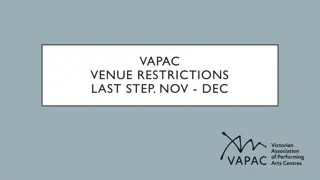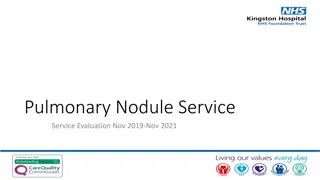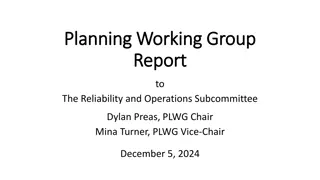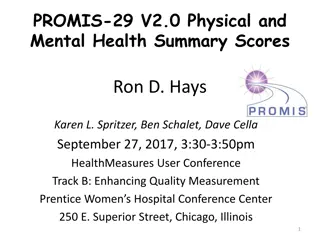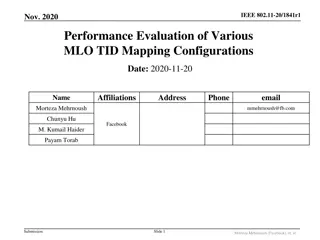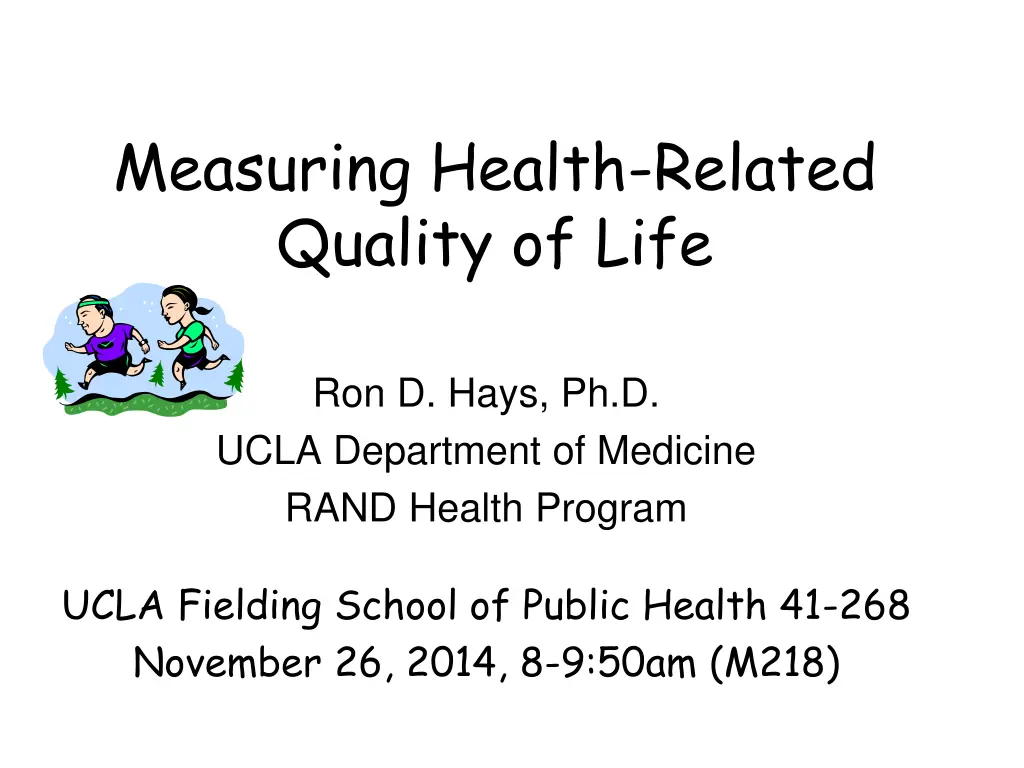
Understanding Health-Related Quality of Life Measurement
Explore insights into measuring health-related quality of life, including assessment methods, care effectiveness, patient-reported outcomes, and the importance of HRQOL in evaluating healthcare quality and patient well-being.
Download Presentation

Please find below an Image/Link to download the presentation.
The content on the website is provided AS IS for your information and personal use only. It may not be sold, licensed, or shared on other websites without obtaining consent from the author. If you encounter any issues during the download, it is possible that the publisher has removed the file from their server.
You are allowed to download the files provided on this website for personal or commercial use, subject to the condition that they are used lawfully. All files are the property of their respective owners.
The content on the website is provided AS IS for your information and personal use only. It may not be sold, licensed, or shared on other websites without obtaining consent from the author.
E N D
Presentation Transcript
Measuring Health-Related Quality of Life Ron D. Hays, Ph.D. UCLA Department of Medicine RAND Health Program UCLA Fielding School of Public Health 41-268 November 26, 2014, 8-9:50am (M218)
U.S. Health Care Issues ACE Signs Access to care ~ 50 million people without health insurance Costs of care Expenditures ~ $ 2.7 Trillion Effectiveness (quality) of care 3
How Do We Know If Care Is Effective? Effective care maximizes probability of desired health outcomes Health outcome measures indicate whether care is effective Cost Effectiveness 4
Health Outcomes Measures Traditional clinical endpoints Survival Clinical/biological indicators Vital signs (e.g., blood pressure) Rheumatoid factor Hematocrit Patient-Reported Outcomes 5
Patient-Reported Measures (PRMs) Mediators Health behaviors (adherence) Health Care Process Reports about care (e.g., communication) Outcomes (PROs) Patient satisfaction with care Health-Related Quality of Life (HRQOL) 6
Satisfaction With Care Patient Characteristics Health Behaviors (Adherence) Technical Quality Quality of Care HRQOL Patient Reports About Care 7
Health-Related Quality of Life (HRQOL) How the person FEELs (well-being) Emotional well-being Pain Energy What the person can DO (functioning) Self-care Role Social 8
HRQOL is Not Quality of environment Type of housing Level of income Social Support 9
Targeted HRQOL Measures Designed to be relevant to particular group. Sensitive to small, clinically-important change. More familiar and actionable for clinicians. Enhance respondent cooperation. 10
IBS-Targeted Item During the last 4 weeks, how often were you angry about your irritable bowel syndrome? None of the time A little of the time Some of the time Most of the time All of the time 11
In general, how would you rate your health? Excellent Very Good Good Fair Poor 12
Does your health now limit you in walking more than a mile? (If so, how much?) Yes, limited a lot Yes, limited a little No, not limited at all 13
SF-36 Generic Profile Measure Physical functioning (10 items) Role limitations/physical (4 items) Role limitations/emotional (3 items) Social functioning (2 items) Emotional well-being (5 items) Energy/fatigue (4 items) Pain (2 items) 14 General health perceptions (5 items)
Scoring HRQOL Profile Scales Average or sum all items in the same scale. Transform average or sum to 0 (worse) to 100 (best) possible range z-score (mean = 0, SD = 1) T-score (mean = 50, SD = 10) 15
Linear Transformations (original score - minimum) *100 (maximum - minimum) X = Y = target mean + (target SD * Zx) (X - X) ZX= SDX 16
SF-36 PCS and MCS PCS_z = (PF_Z * 0.42) + (RP_Z * 0.35) + (BP_Z * 0.32) + (GH_Z * 0.25) + (EF_Z * 0.03) + (SF_Z * -.01) + (RE_Z * -.19) + (EW_Z * -.22) MCS_z = (PF_Z * -.23) + (RP_Z * -.12) + (BP_Z * -.10) + (GH_Z * -.02) + (EF_Z * 0.24) + (SF_Z * 0.27) + (RE_Z * 0.43) + (EW_Z * 0.49) PCS = (PCS_z*10) + 50 MCS = (MCS_z*10) + 50 17
HRQOL is Predictive of Mortality (5 years later) 17 18 16 14 % 12 10 Dead 8 6 5 6 4 2 2 0 (n=676) (n=754) (n=1181) (n=609) <35 35-44 45-54 >55 SF-36 Physical Health Component Score (PCS) T score Ware et al. (1994). SF-36 Physical and Mental Health Summary Scales: A User s Manual. 18
HRQOL in HIV Compared to other Chronic Illnesses and General Population Emot. Phy func MS ESRD Diabetes Depression Prostate disease GERD Epilepsy General Pop AIDS Symptomatic Asymptomatic 0 10 20 30 40 50 60 T-score metric 19 Hays et al. (2000), American Journal of Medicine
Course of Emotional Well-being Over 2-years for Patients in the MOS General Medical Sector Hypertension 81 79 Diabetes 77 75 73 0-100 range 71 69 67 Major Depression 65 63 61 59 57 55 2-Years Baseline Hays, R.D., Wells, K.B., Sherbourne, C.D., Rogers, W., & Spritzer, K. (1995). Functioning and well-being outcomes of patients with depression compared to chronic medical illnesses. Archives of General Psychiatry, 52, 11-19. 20
Physical Functioning in Relation to Time Spent Exercising 2-years Before 84 Hypertension 82 80 Diabetes 78 76 0-100 range 74 Current Depression 72 70 68 66 64 62 Low High Total Time Spent Exercising Stewart, A.L., Hays, R.D., Wells, K.B., Rogers, W.H., Spritzer, K.L., & Greenfield, S. (1994). Long-term functioning and well-being outcomes associated with physical activity and exercise in patients with chronic conditions in the Medical Outcomes Study. Journal of Clinical Epidemiology, 47, 719-730. 21
Is New Treatment (X) Better Than Standard Care (O)? 100 90 80 X 70 0 60 X 50 0 40 30 20 10 0 Physical Health Mental Health X > 0 0 > X 22
Is Medicine Related to Worse HRQOL? Medication Use HRQOL (0-100) Person 1 2 3 4 5 6 7 8 9 No No No No No Yes Yes Yes Yes Yes dead dead 10 50 75 100 0 25 50 75 100 Group n HRQOL No Medicine Yes Medicine 3 5 75 50 23
SF-6D 6-dimensional classification (collapsed role scales, dropped general health) 18,000 possible states - 249 states rated by sample of 836 from UK general population Brazier et al. (1998, 2002) http://www.shef.ac.uk/scharr/sections/heds/mvh/sf-6d 26
Health state 424421 (0.59) Your health limits you a lot in moderate activities (such as moving a table, pushing a vacuum cleaner, bowling or playing golf) You are limited in the kind of work or other activities as a result of your physical health Your health limits your social activities (like visiting friends, relatives etc.) most of the time. You have pain that interferes with your normal work (both outside the home and housework) moderately You feel tense or downhearted and low a little of the time. You have a lot of energy all of the time 27
HRQOL in SEER-Medicare Health Outcomes Study (n = 126,366) SF-6D (0-1 possible range) by Condition 0.82 0.81 0.8 0.79 0.78 0.77 0.76 0.75 0.74 0.73 No Condition Hypertension Arthritis-Hand Stroke COPD Arthritis-Hip Controlling for age, gender, race/ethnicity, education, income, and marital status. 65 28
Distant stage of cancer associated with 0.05-0.10 lower SF-6D Score 0.8 0.78 0.76 0.74 Local-Region 0.72 Distant 0.7 Unstaged 0.68 0.66 0.64 Breast Pros. Col. Lung Figure 1. Distant Stage of Disease Associated with Worse SF-6D Scores (Sample sizes for local/regional, distant, and unstaged: Breast (2045,26, 347); Prostate (2652, 61 and 633), Colorectal (1481, 48 and 203), and Lung (466, 47 and 65). 67 29
Item Responses and Trait Levels Person 1 Person 2 Person 3 Trait Continuum Item 1 Item 2 Item 3 www.nihpromis.org
Reliability Target for Use of Measures with Individuals Reliability ranges from 0-1 0.90 or above is goal Reliability = 0.90 when SE = 3.2 T-scores (mean = 50, SD = 10) Reliability = 1 (SE/10)2 T =50 + (z * 10)
In the past 7 days I was grouchy [1st question] Never [39] Rarely [48] Sometimes [56] Often [64] Always [72] Estimated Anger = 56.1 SE = 5.7 (rel. = 0.68)
In the past 7 days I felt like I was ready to explode [2nd question] Never Rarely Sometimes Often Always Estimated Anger = 51.9 SE = 4.8 (rel. = 0.77)
In the past 7 days I felt angry [3rd question] Never Rarely Sometimes Often Always Estimated Anger = 50.5 SE = 3.9 (rel. = 0.85)
In the past 7 days I felt angrier than I thought I should [4th question] - Never Rarely Sometimes Often Always Estimated Anger = 48.8 SE = 3.6 (rel. = 0.87)
In the past 7 days I felt annoyed [5th question] Never Rarely Sometimes Often Always Estimated Anger = 50.1 SE = 3.2 (rel. = 0.90)
In the past 7 days I made myself angry about something just by thinking about it. [6th question] Never Rarely Sometimes Often Always Estimated Anger = 50.2 SE = 2.8 (rel = 0.92)
PROMIS Physical Functioning vs. Legacy Measures 10 20 30 40 50 60 70
Effect Sizes for Changes in SF-36 Scores Effect Size 0.13 0.35 0.35 0.21 0.53 0.36 0.11 0.41 0.24 0.30 Energy = Energy/Fatigue; EWB = Emotional Well-being; Gen H=General Health; MCS =Mental Component Summary; Pain = Bodily Pain; Physical Component Summary; PFI = Physical Functioning; Role-E = Role-Emotional; Role-P = Role-Physical; Social = Social Functioning PCS = 40
Significant Improvement in all but 1 of SF-36 Scales (Change is in T-score metric) Change t-test prob. PF-10 RP-4 BP-2 GH-5 EN-4 SF-2 RE-3 EWB-5 PCS MCS 1.7 4.1 3.6 2.4 5.1 4.7 1.5 4.3 2.8 3.9 2.38 3.81 2.59 2.86 4.33 3.51 0.96 3.20 3.23 2.82 .0208 .0004 .0125 .0061 .0001 .0009 .3400 .0023 .0021 .0067 41
Defining a Responder: Reliable Change Index (RCI) X X 2 1 ( 2 ( ) ) SE RCI >=1.96 is statistically significant individual change.. 42
Amount of Change in Observed Score Needed for Significant Individual Change Scale RCI Effect size Cronbach s alpha PF-10 8.4 0.67 0.94 RP-4 8.4 0.72 0.93 BP-2 10.4 1.01 0.87 GH-5 13.0 1.13 0.83 EN-4 12.8 1.33 0.77 SF-2 13.8 1.07 0.85 RE-3 9.7 0.71 0.94 EWB-5 13.4 1.26 0.79 PCS 7.1 0.62 0.94 MCS 9.7 0.73 0.93 43 43
7-31% of People in Sample Improve Significantly % Improving % Declining Difference PF-10 RP-4 13% 31% 2% 2% + 11% + 29% BP-2 22% 7% + 15% GH-5 EN-4 SF-2 RE-3 EWB-5 PCS 7% 9% 17% 15% 19% 24% 0% 2% 4% 15% 4% 7% + 7% + 7% + 13% 0% + 15% + 17% MCS 22% 11% + 11% 44
Questions? Contact Information: drhays@ucla.edu (310-794-2294) Powerpoint file available for downloading at: http://gim.med.ucla.edu/FacultyPages/Hays/ 45






